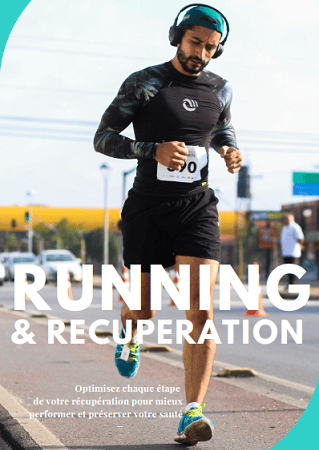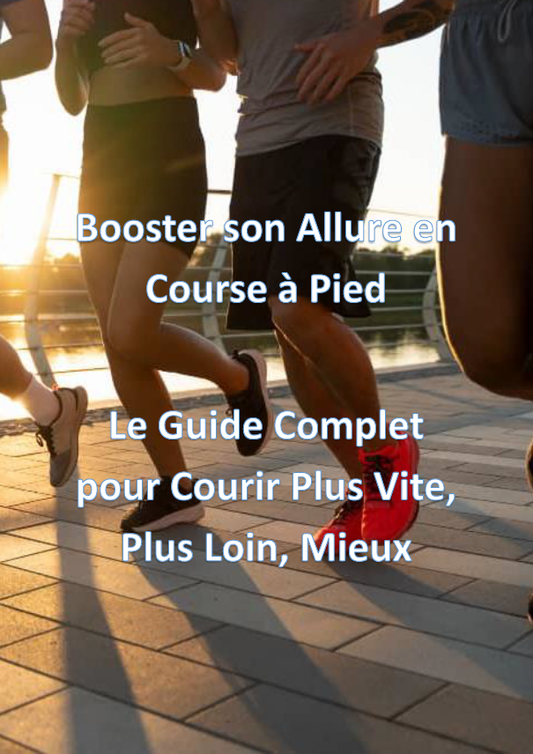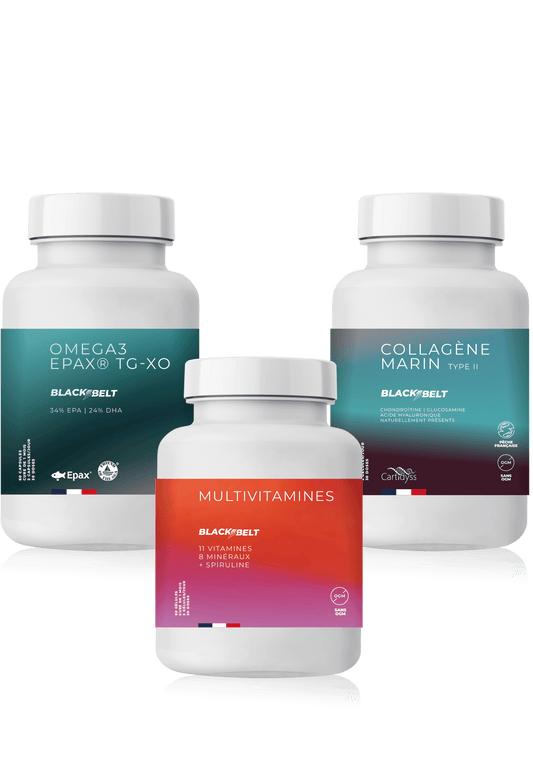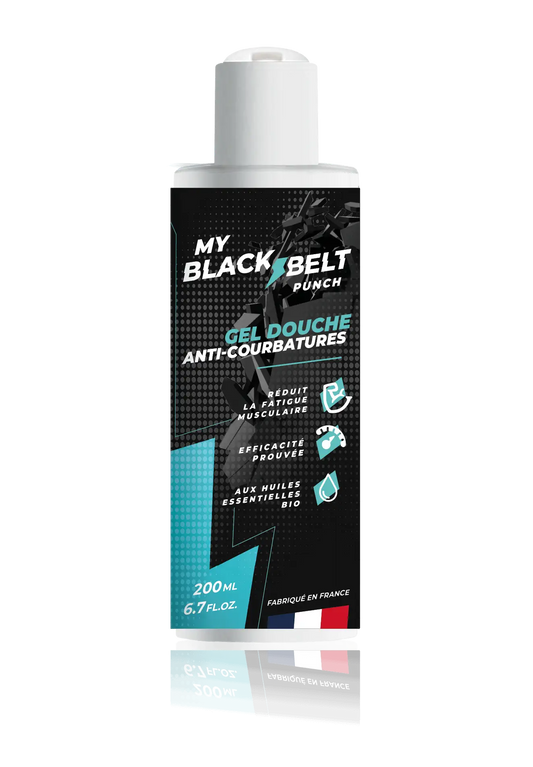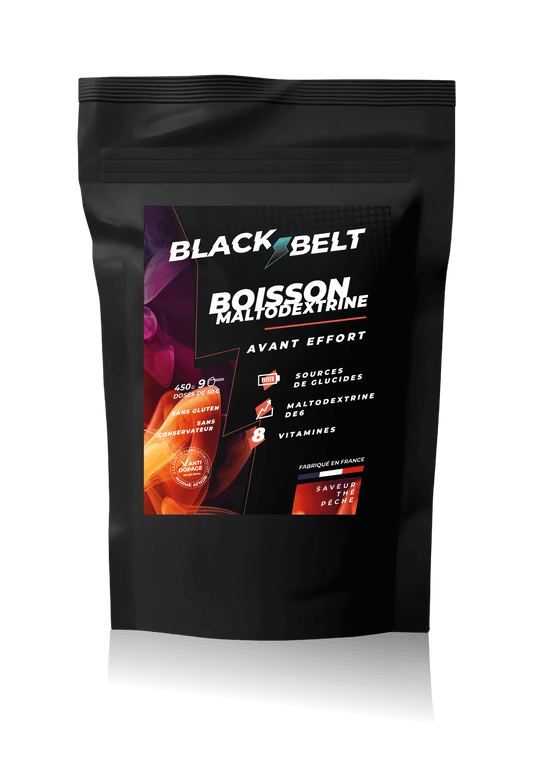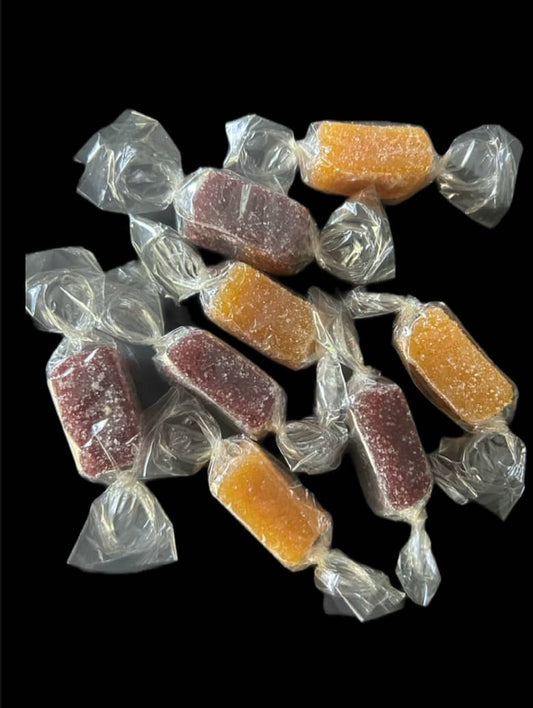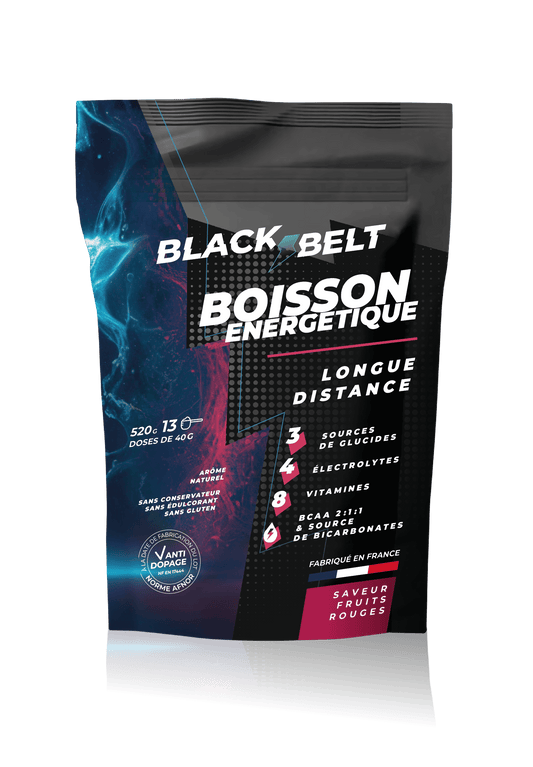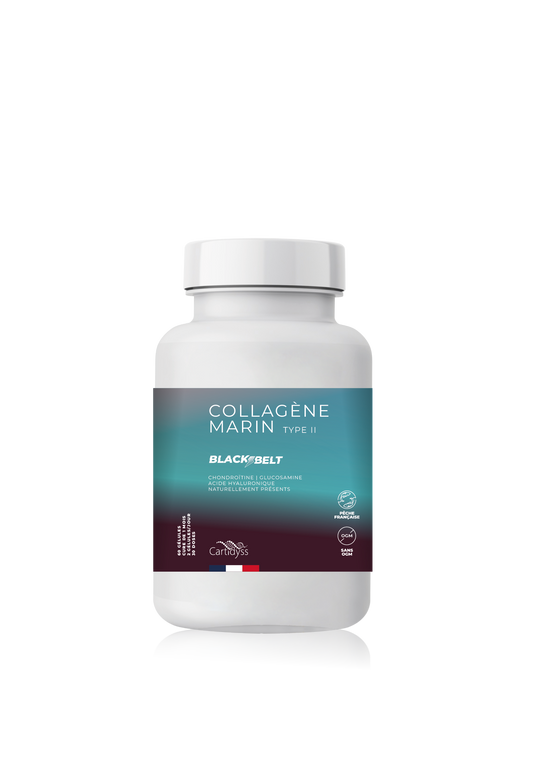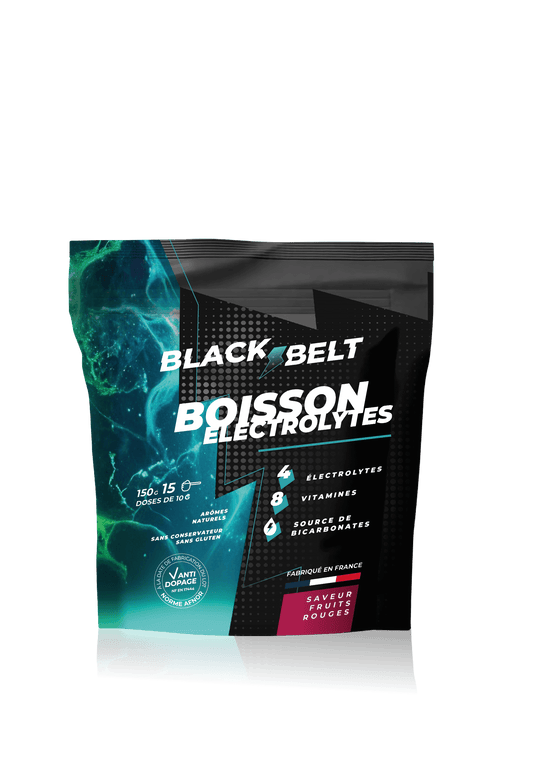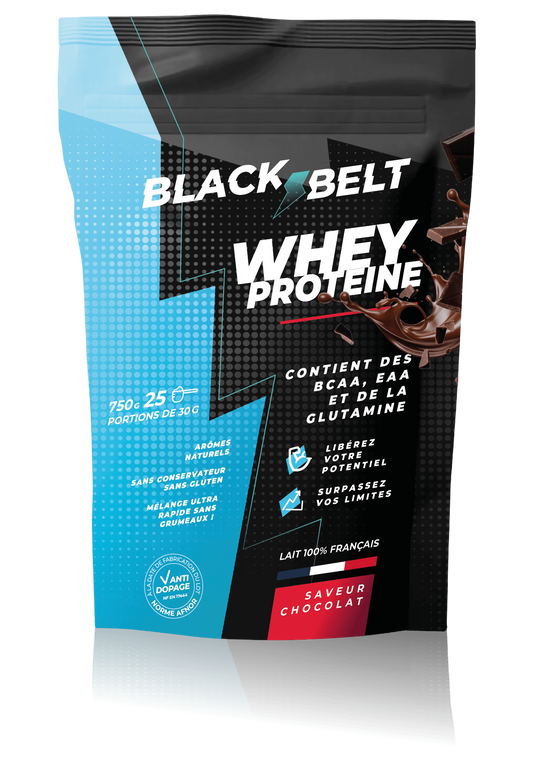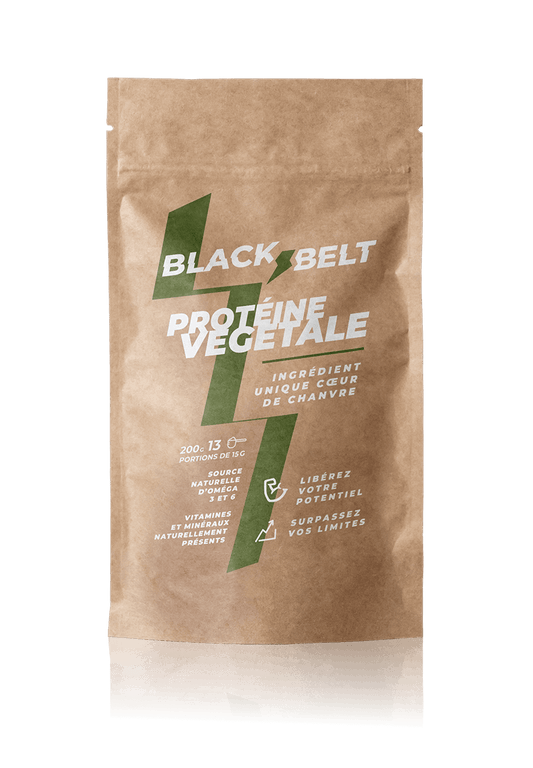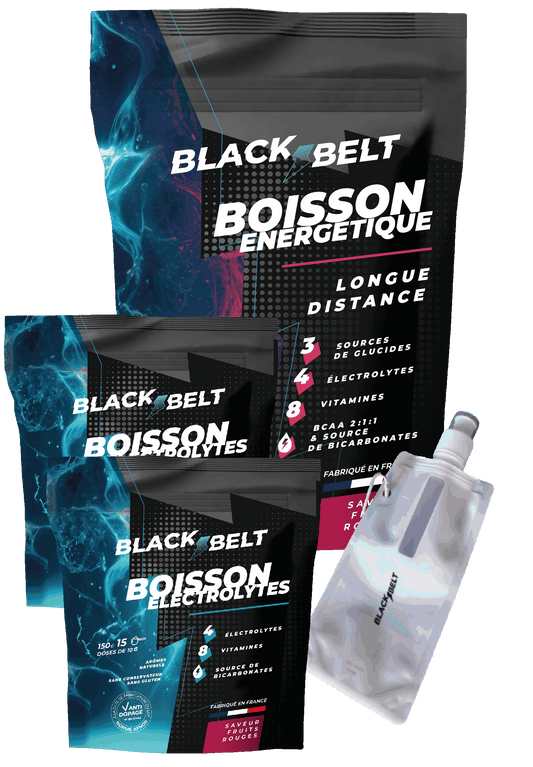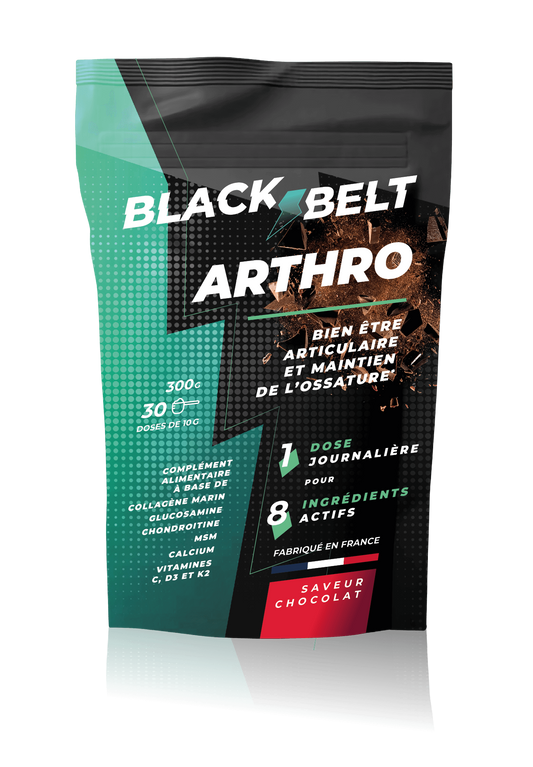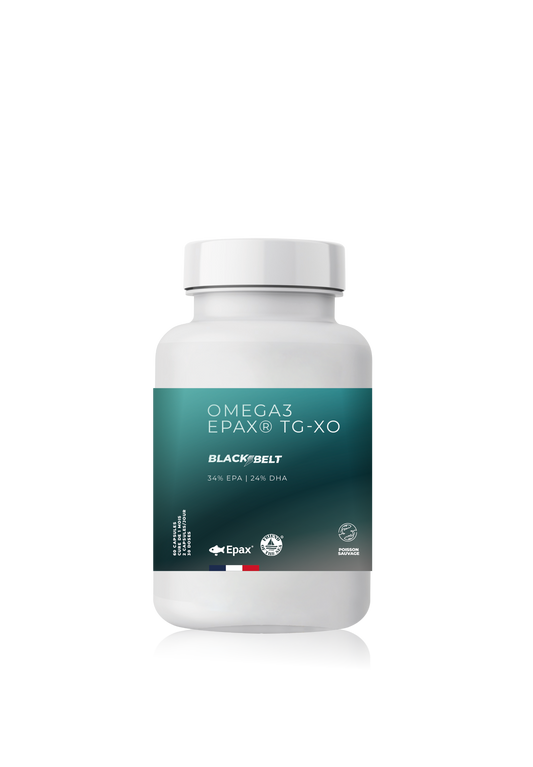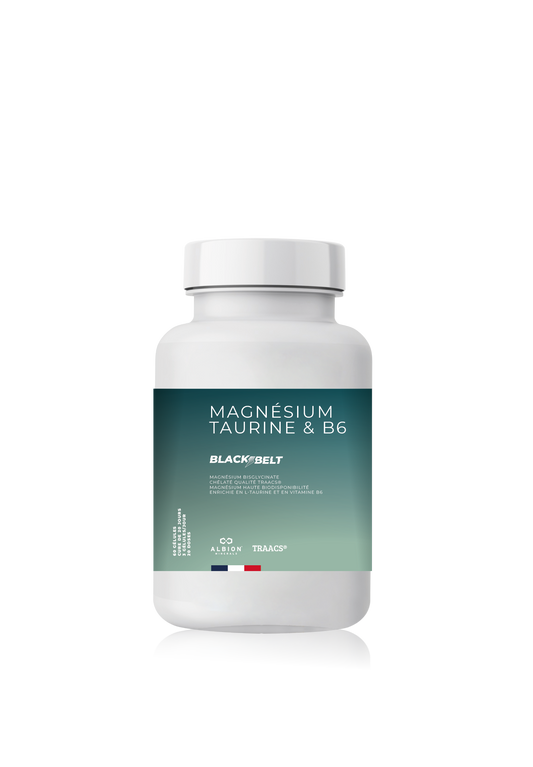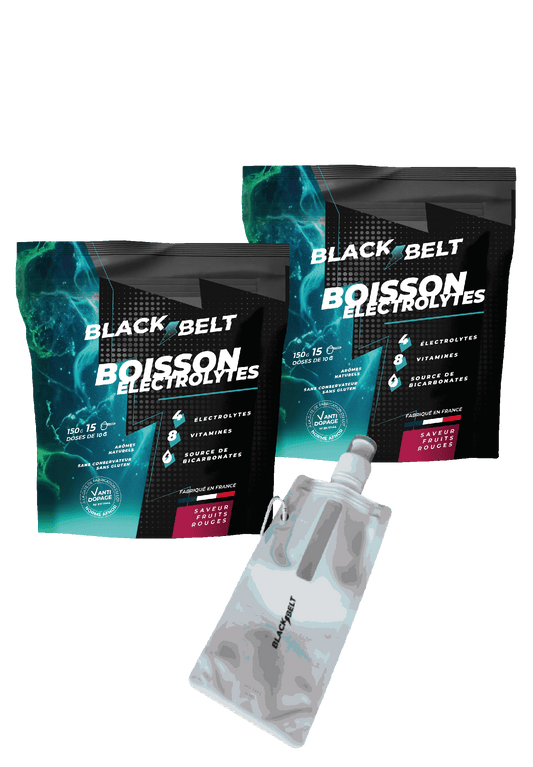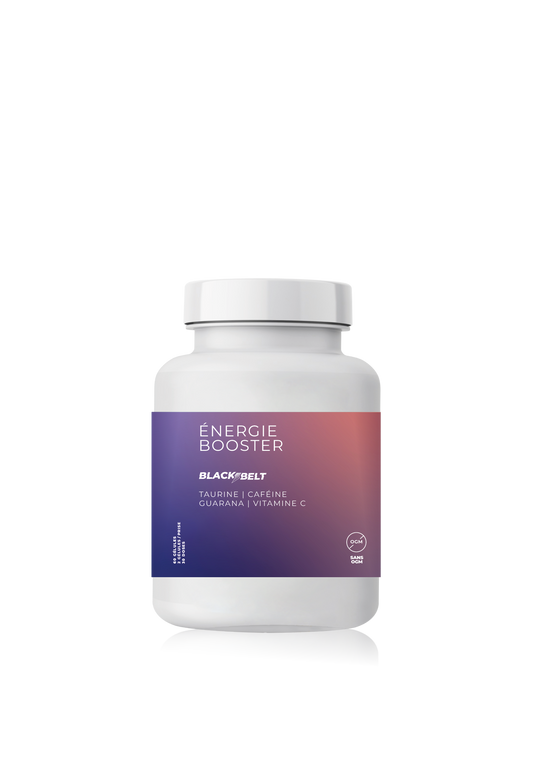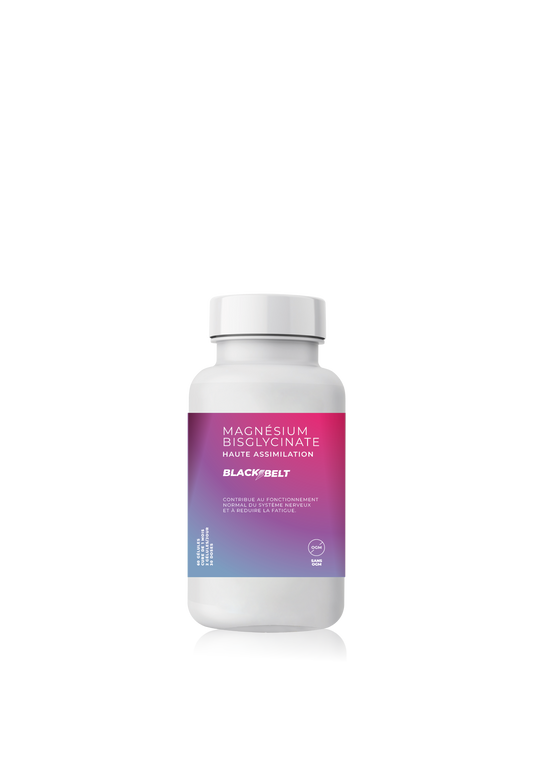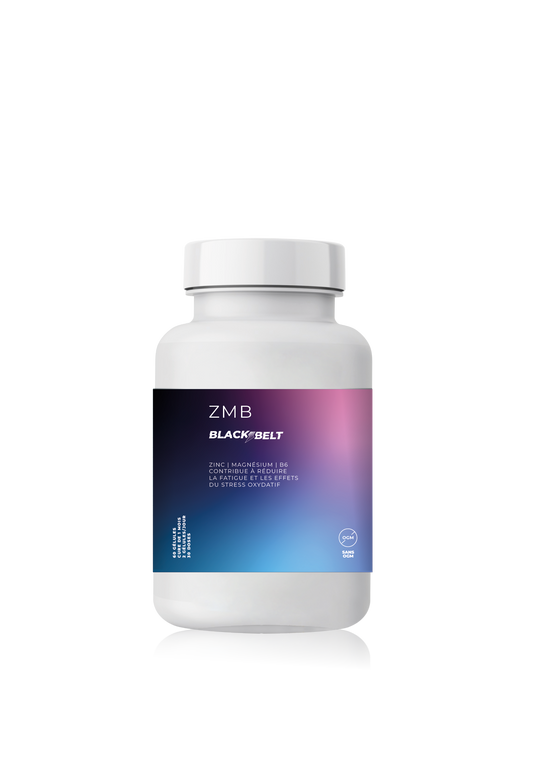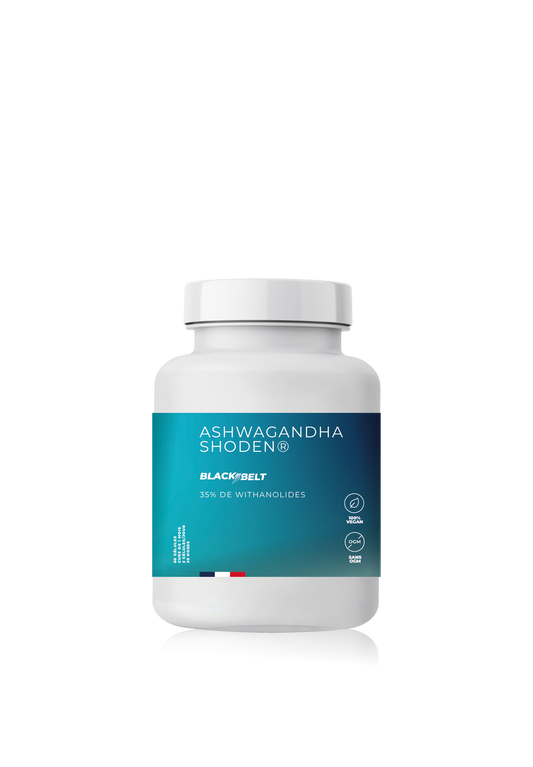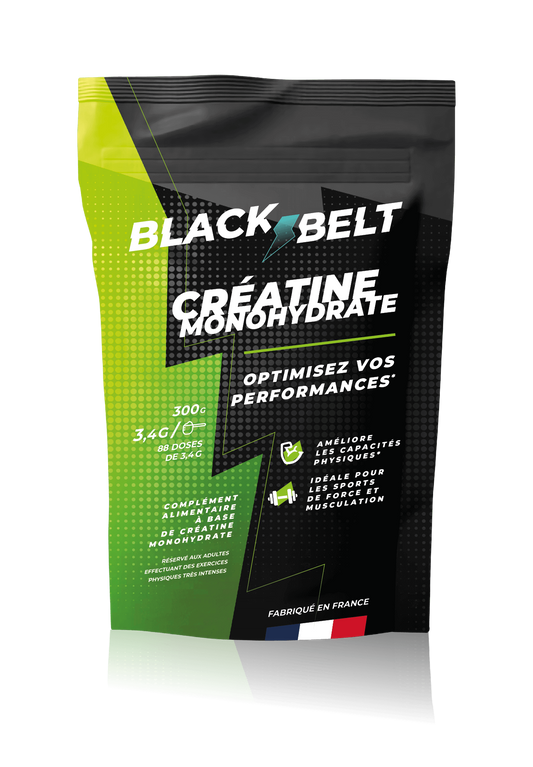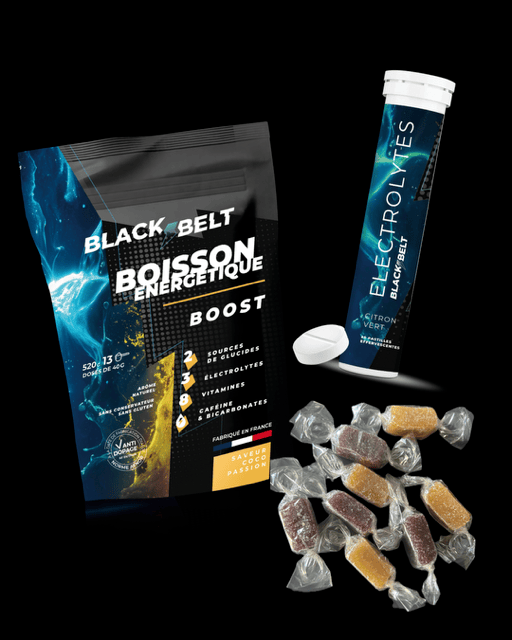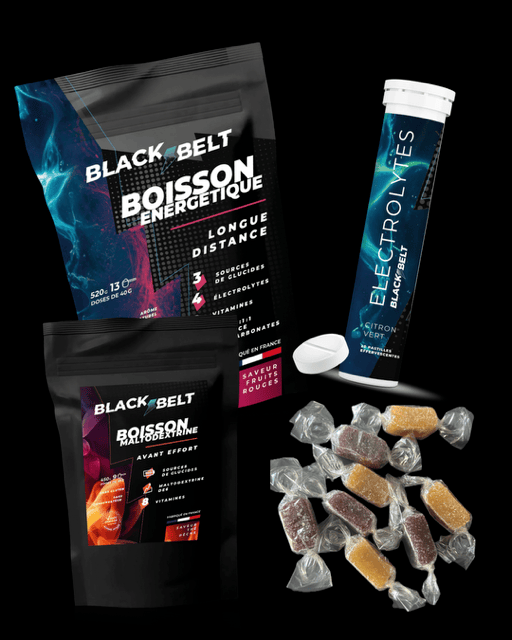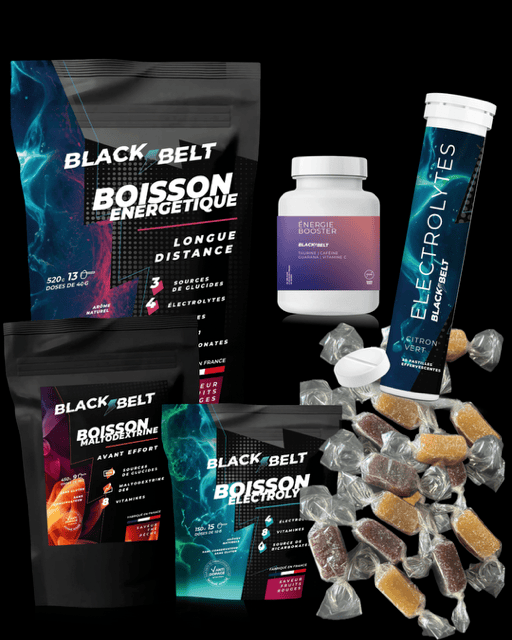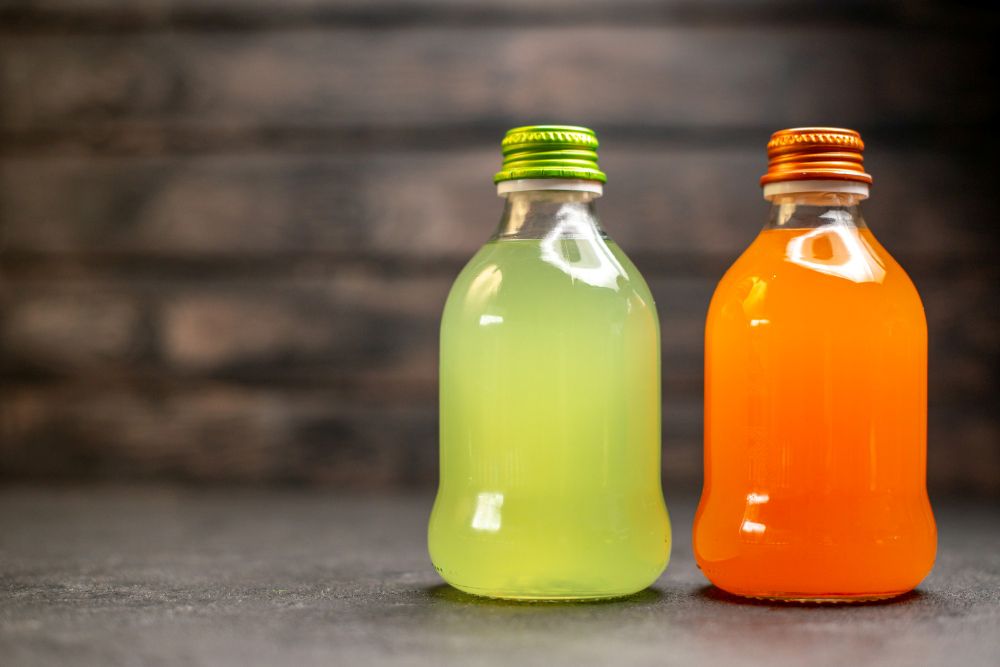
Share
What is the difference between an energy drink and an isotonic drink?
When it comes to hydration and athletic performance, many athletes are debating whether to choose an energy drink or an isotonic drink . While both types of drinks are designed to support exercise, their roles and compositions differ. So, which one should you choose based on your activity?
Energy drink and isotonic drink: definitions and compositions
What is an energy drink?
Basically, an energy drink is designed to provide a quick energy boost. It mainly contains:
• Fast carbohydrates (sugars) for an immediate boost,
• (Sometimes) Caffeine or taurine to stimulate the nervous system, which we prefer to offer as a supplement in capsules for those who want it at Blackbelt with our Energy Booster.
• Vitamins and minerals to support the body.
They are often used in cases of temporary fatigue, during intense exercise, or for a boost before a competition. Be careful, however, as some drinks are not specifically formulated for hydration and can cause an energy spike followed by a bout of fatigue. This is already the first difference between an energy drink and an isotonic drink.
Obviously, our Blackbelt energy drink does not contain these defects because it is composed as both an energy and isotonic drink to offer you only the best as always.
Remember: Energy drinks are primarily intended to provide extra energy, but they do not compensate for water loss due to exercise.
Concretely, a basic energy drink can be made by yourself, but it remains very basic since it only provides carbohydrates, and the disadvantages that go with it, such as a spike in blood sugar. Therefore, favor truly sophisticated energy drinks containing different sources of carbohydrates, but also electrolytes, vitamins, and BCAAs if the effort is longer, like in our Blackbelt energy drink.

What is an isotonic drink?
An isotonic drink, on the other hand, is specially designed to hydrate and replenish mineral salt losses linked to perspiration. Its composition includes:
• A balance of carbohydrates (6-8%) to provide energy without disrupting water absorption,
• Electrolytes (sodium, potassium, magnesium) to compensate for mineral losses,
• Osmolarity close to that of blood for optimal absorption.
These drinks are particularly suitable for endurance sports such as running, trail running, or cycling. Like our unique Blackbelt energy drink.
Key takeaway: Isotonic drinks promote hydration and endurance, while providing a slight energy boost.
When and how to choose between an energy and isotonic drink?
Obviously with the Blackbelt drink , you don't have to choose since you have the best of both, isn't that the best solution?
And otherwise...
When should you choose an energy drink?
• Before an intense effort for a quick boost,
• When you feel tired in the middle or at the end of the day,
• For explosive sports (crossfit, sprinting, intense bodybuilding).
⚠️ Avoid in case of high heat or prolonged exercise, as they do not rehydrate the body properly.
When should you choose an isotonic drink?
• During long-term exercise (running, triathlon, hiking),
• In high heat to compensate for water loss,
• After exercise to accelerate muscle recovery.
Ideal for endurance sports, they allow you to maintain a good level of performance without creating an energy peak followed by a sudden drop.

Conclusion: which drink should you choose depending on your sport?
Type of drink Ideal for Main effects
Energy drink Explosive and short sports, fatigue Fast energy boost, nerve stimulation
Isotonic drink Endurance sports and heat Optimal hydration, maintaining effort
If you're involved in endurance sports, opt for an isotonic drink. However, for a quick energy boost, an energy drink can be helpful.
The ideal? Adapt your hydration according to your exercise intensity, the duration of your activity, and the weather conditions.
Obviously the best choice is the Blackbelt energy drink which combines the benefits of both an energy drink and an isotonic drink.

